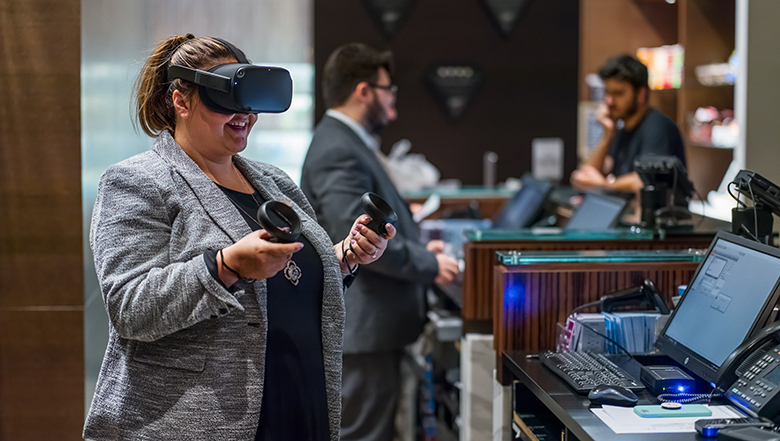At the OC6 conference last month, Facebook’s Oculus team announced a new platform for VR in the workplace. Oculus for Business, which will launch in November of this year.
The new platform comes with specific deployment models and tools to enable the deployment and scaling of VR for companies across a variety of industries. Specifically mentioned in the promotional videos was that of the automotive and hospitality industries. VR for Business will enable a new type of training for people in the field as well as an increased level of empathy and understanding for people designing and managing new product development.
We can think of VR for Business as your traditional device management system that companies use today to distribute and service computer hardware that employees use to get their work done. When a new employee joins, a computer is provided with a specific set of apps and capabilities built in. When updates are needed, those can be deployed from a central control hub to all computers within the company device management system.
VR for Business from Oculus will behave much the same way. Distribution and servicing of Oculus Quest and Oculus Go VR Headsets will be made easier with the addition of traditional device management features and frameworks that system administrators are familiar with.
Because this initiative is brand new with Oculus, they acknowledge that the software will grow alongside the needs of customers – incorporating feedback from early adopters as they refine the offering for mass adoption down the road.
Interestingly, the deployment software that will allow system administrators to deploy headsets is actually an Android smartphone app (Android only to start). This app will perform the typical Device Manager controls like updating settings, deploying apps remotely, or locking down certain features for headsets in the field. Oculus is positioning this as a way to help focus workers on doing exactly and only what managers and system administrators intend.
A redesigned UI will allow companies to be front and center in the VR experience. This means companies will be able to change the initial loading screen that sends new users to the Oculus store front with something that is more targeted. It also allows them to automatically launch certain apps when the headset is put on for the first time, as long as the headset has been properly provisioned first.
Part of the streamlining of VR for Business includes the exciting new hand tracking on the Oculus Quest, which will further reduce the friction that newcomers to VR experience when they try to interact with controllers for the first time. Of course, there aren’t any titles that are available today that work with hand recognition, and it’s not difficult to think of scenarios where non-controller input would quickly fall apart for work activities that require very fine hand-movements.
Oculus wants customers of VR for Business to be comfortable with facebook as a business partner, claiming the system and customer’s data is private and secure. However, facebook as a parent company doesn’t have the best track record for keeping things private or secure.
Even prior to the announcement of VR for Business, there have been companies that have worked with third-party VR developers to create employee orientation and training programs. Walmart, for example, has been using the Oculus Go and Oculus Quest for employee competently training since they launched. And these were done prior to VR for Business was announced.
We’ll have to see what difference it makes for companies once they get their hands on VR for Business this November. If it’s limited to what Oculus announced at OC6, then we shouldn’t expect anything more than your typical device management software that companies use today To deploy laptops and company smartphones – with the only difference being the added ability to deploy VR Headsets in the same way.






























